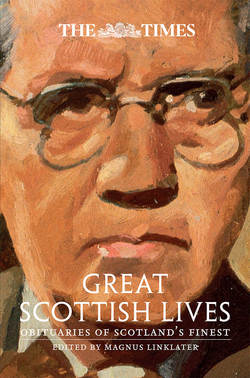Читать книгу The Times Great Scottish Lives: Obituaries of Scotland’s Finest - Magnus Linklater, Magnus Linklater - Страница 10
ОглавлениеSir Charles Napier, G.C.B.
‘Few officers have seen more service or suffered more from the casualties of war’
30 August 1853
We regret to announce the death of this distinguished soldier, whose services, spread over a period of half a century, have shed no small lustre on the British arms. The melancholy event took place at his seat at Oaklands, near Portsmouth, yesterday morning, at 10 o’clock. We understand he had been suffering severely from illness for some time past, and death was therefore not unexpected by his friends.
Few officers have seen more hard service, or suffered more from the casualties of war, than Sir Charles Napier. He was literally covered with wounds, and his hairbreadth escapes amid dangers from which he never shrunk would require a volume to enumerate. Sir Charles entered the army as an ensign in January, 1794, and was a lieutenant in May of the same year. In 1803 he became captain, and in 1806 acquired the rank of major; was a lieutenant-colonel in 1811, colonel in 1825, a major-general in 1837, and a lieutenant-general in 1846. He was also colonel of the 221 Regiment of Foot. The following is a brief list of the more important services in which he was engaged: –
In 1798 he was engaged in the suppression of the Irish rebellion, and again in putting down the insurrection of 1803. In the Peninsula he commanded the 50th throughout the campaign, terminating with the battle of Corunna, and was made prisoner after receiving no fewer than five wounds, viz, leg broken by a musket shot, a sabre cut to the head, wound in the back with a bayonet, ribs broken by a cannon shot, and several severe contusions from the buttend of a musket.
In the latter end of 1809 he returned to the Peninsula, where he remained till 1811, and was present at the action of the Coa, where he had two horses shot under him; at Busaco, where he was shot through the face, and had his jaw broken and eye injured; at the battle of Fuentes d’Onor, at the second siege of Badajos, and a great number of skirmishes. In 1813 he served in a floating expedition on the coast of the United States of America, and landed a great number of times at Craney Island and other places. He served in the campaign of 1815, and was present at the storming of Cambray. Sir Charles, as is well known, commanded the force employed in Scinde, and, on the 17th of February, 1843, with only 2,800 British troops, attacked and defeated, after a desperate action of three hours duration, 22,000 of the enemy strongly posted at Meeanee. On the 21st of February Hydrabad surrendered to him; and on the 24th of March, with 5,000 men, he attacked and signally defeated 20,000 of the enemy posted in a very strong and difficult position at Dabba, near Hydrabad, thus completing the entire subjugation of Scinde. Early in 1845, with a force consisting of about 5,000 men of all arms, he took the field against the mountain and desert tribes situated on the right bank of the Indus to the north of Shikarpore, and, after an arduous campaign, effected the total destruction of these robber tribes.
In 1849 Sir Charles was appointed Commander-in-Chief of the Forces in India, but this position he did not long retain. For his services at the Corunna he received the gold medal, and also the silver war medal, with two clasps, for Busaco and Fuentes d’Onor. Long and arduous as his military services had been, he found time for the more peaceful pursuits of literature, and was the author of works on the colonies, on colonisation, and military law, &c. Sir Charles was born in 1782, and consequently was 71 years of age.
